�
Principles of LithographyThird Edition
�
Bellingham, Washington USAPrinciples of LithographyThird EditionHarry J. Levinson�
Library of Congress Cataloging-in-Publication Data
Levinson, Harry J.
Principles of lithography / Harry J. Levinson. – 3rd ed.
p. cm. – (Press monograph ; 198)
Includes bibliographical references and index.
ISBN 978-0-8194-8324-9
1. Integrated circuits–Design and construction. 2. Microlithography. I. Title.
TK7874.L397 2010
621.381531–dc22
2010026775
Published by
SPIE
P.O. Box 10
Bellingham, Washington 98227-0010 USA
Phone: +1 360.676.3290
Fax: +1 360.647.1445
Email: Books@spie.org
Web: http://spie.org
Copyright c 2010 Society of Photo-Optical Instrumentation Engineers
All rights reserved. No part of this publication may be reproduced or distributed in any form or by any means
without written permission of the publisher.
The content of this book reflects the work and thought of the author(s). Every effort has been made to publish
reliable and accurate information herein, but the publisher is not responsible for the validity of the information or
for any outcomes resulting from reliance thereon.
Printed in the United States of America.
�
Contents
Preface to the Third Edition ...........................................................................
ix
Preface to the Second Edition....................................................................... xi
Preface............................................................................................................... xiii
Chapter 1 Overview of Lithography ................................................................
Problems...........................................................................................................................
Chapter 2 Optical Pattern Formation ..............................................................
1
6
7
The Problem of Imaging................................................................................
2.1
7
Aerial Images ....................................................................................................
2.2
9
The Contributions of Physics and Chemistry ......................................... 22
2.3
2.4
Focus .................................................................................................................... 32
Problems........................................................................................................................... 46
References ....................................................................................................................... 47
Chapter 3 Photoresists ................................................................................... 51
Positive and Negative Resists....................................................................... 51
3.1
Adhesion Promotion ....................................................................................... 54
3.2
Resist Spin Coating, Softbake, and Hardbake........................................ 57
3.3
Photochemistry of Novolak/DNQ g- and i-line Resists ...................... 68
3.4
Acid-Catalyzed DUV Resists ...................................................................... 70
3.5
Development and Post-Exposure Bakes................................................... 76
3.6
Operational Characterization ....................................................................... 81
3.7
3.8
Line-Edge Roughness..................................................................................... 82
3.9 Multilayer Resist Processes .......................................................................... 92
Problems........................................................................................................................... 95
References ....................................................................................................................... 96
Chapter 4 Modeling and Thin-Film Effects ..................................................... 109
4.1 Models of Optical Imaging........................................................................... 109
�
vi
Contents
Aberrations ......................................................................................................... 114
4.2
4.3 Modeling Photochemical Reactions .......................................................... 122
Thin-Film Optical Effects ............................................................................. 125
4.4
4.5
Post-Exposure Bakes ...................................................................................... 130
4.6 Methods for Addressing the Problems of Reflective Substrates ...... 133
4.7
Development...................................................................................................... 140
Problems........................................................................................................................... 141
References ....................................................................................................................... 141
Chapter 5 Wafer Steppers ............................................................................... 147
Overview ............................................................................................................. 147
5.1
Light Sources..................................................................................................... 150
5.2
Illumination Systems ...................................................................................... 162
5.3
Reduction Lenses ............................................................................................. 166
5.4
Autofocus Systems .......................................................................................... 185
5.5
The Wafer Stage ............................................................................................... 187
5.6
Scanning.............................................................................................................. 193
5.7
Dual-Stage Exposure Tools .......................................................................... 195
5.8
5.9
Lithography Exposure Tools before Steppers ........................................ 196
Problems........................................................................................................................... 201
References ....................................................................................................................... 201
Chapter 6 Overlay............................................................................................ 215
6.1
Alignment Systems.......................................................................................... 217
6.1.1 Classification of alignment systems .......................................... 221
6.1.2 Optical methods for alignment and wafer-to-reticle
referencing ......................................................................................... 221
6.1.3 Number of alignment marks ........................................................ 227
6.2
Overlay Models ................................................................................................ 228
6.3 Matching ............................................................................................................. 237
6.4
Process-Dependent Overlay Effects .......................................................... 247
Problems........................................................................................................................... 249
References ....................................................................................................................... 250
Chapter 7 Masks and Reticles......................................................................... 257
7.1
Overview ............................................................................................................. 257
7.2 Mask Blanks ...................................................................................................... 259
7.3 Mechanical Optical-Pattern Generators.................................................... 261
Electron-Beam Lithography and Mask Writers..................................... 262
7.4
Optical Mask Writers...................................................................................... 276
7.5
Resists for Mask Making............................................................................... 277
7.6
7.7
Etching................................................................................................................. 281
Pellicles ............................................................................................................... 281
7.8
�
Contents
vii
7.9 Mask-Defect Inspection and Repair .......................................................... 289
Problems........................................................................................................................... 293
References ....................................................................................................................... 294
Chapter 8 Confronting the Diffraction Limit ................................................... 307
Off-Axis Illumination ..................................................................................... 307
8.1
Optical Proximity Effects.............................................................................. 316
8.2
The Mask-Error Factor................................................................................... 326
8.3
Phase-Shifting Masks ..................................................................................... 330
8.4
8.5
Putting It All Together.................................................................................... 341
Problems........................................................................................................................... 343
References ....................................................................................................................... 343
Chapter 9 Metrology ........................................................................................ 351
9.1
9.1.2
9.1.3
Linewidth Measurement ................................................................................ 351
9.1.1
Linewidth measurement using scanning electron
microscopes ....................................................................................... 351
Scatterometry .................................................................................... 359
Electrical linewidth measurement .............................................. 361
9.2 Measurement of Overlay ............................................................................... 363
Problems........................................................................................................................... 366
References ....................................................................................................................... 367
Chapter 10 Immersion Lithography and the Limits of Optical Lithography .... 371
10.1 Immersion Lithography.................................................................................. 372
10.2 The Diffraction Limit...................................................................................... 377
10.3 Improvements in Optics................................................................................. 380
10.4 Maximum Numerical Aperture ................................................................... 381
10.5 The Shortest Wavelength............................................................................... 384
10.6 Improved Photoresists .................................................................................... 386
10.7 Flatter Wafers .................................................................................................... 387
10.8 How Low Can k1 Go?..................................................................................... 388
10.9 How Far Can Optical Lithography Be Extended? ................................ 389
10.10 Double Patterning ............................................................................................ 395
10.11 Interferometric Lithography ......................................................................... 400
Problems........................................................................................................................... 401
References ....................................................................................................................... 402
Chapter 11 Lithography Costs.......................................................................... 407
11.1 Cost-of-Ownership .......................................................................................... 407
11.1.1 Capital costs ...................................................................................... 408
11.1.2 Consumables ..................................................................................... 416
�
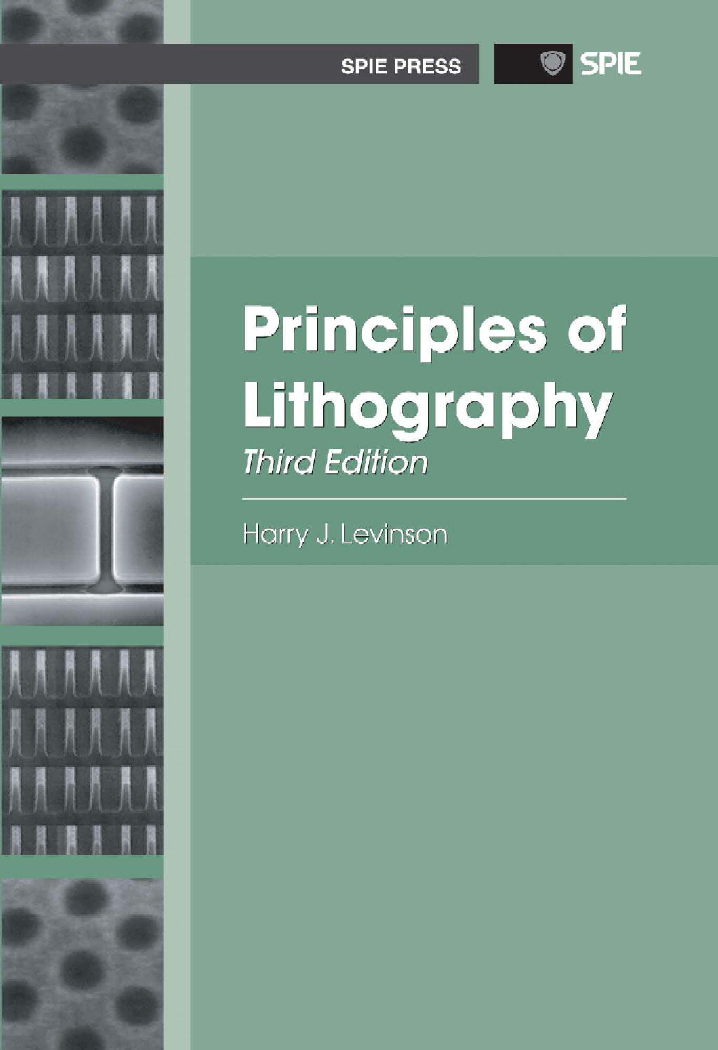
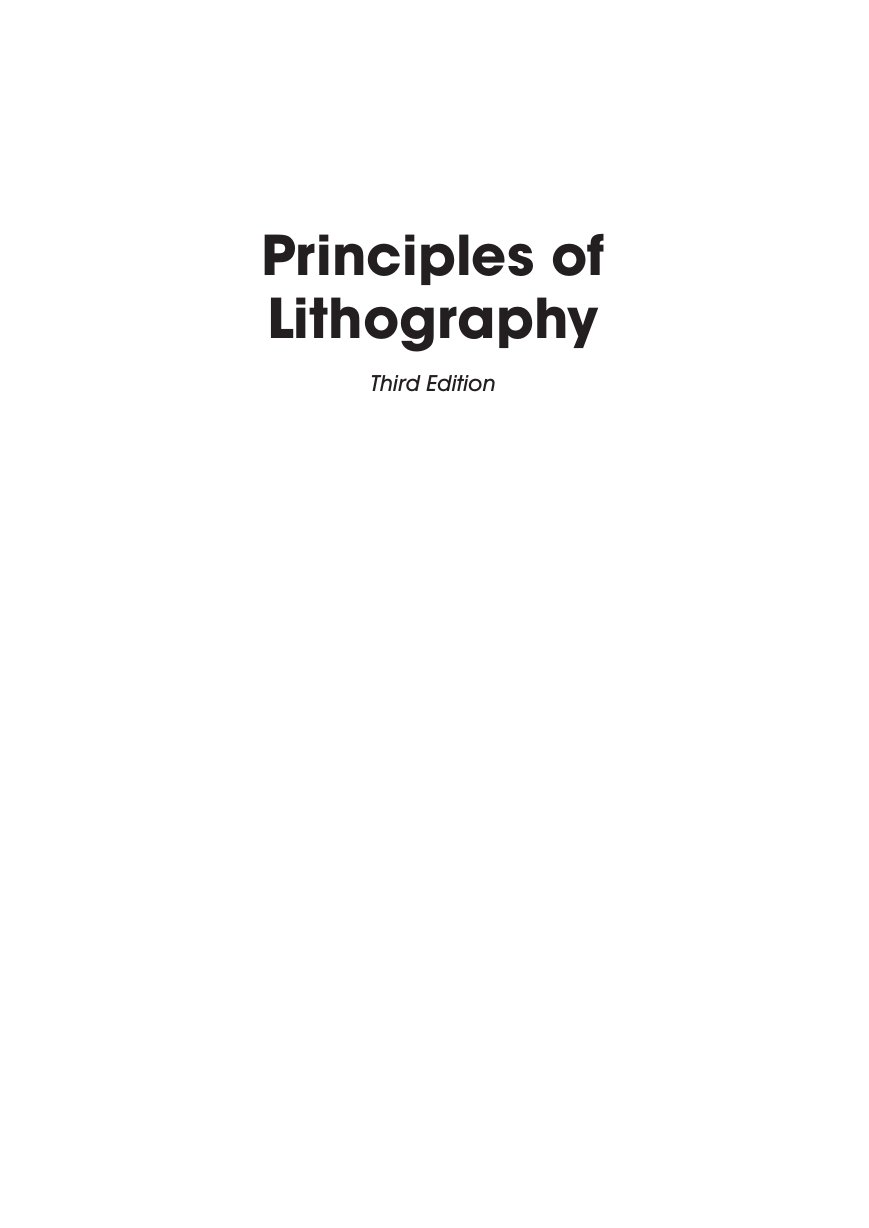

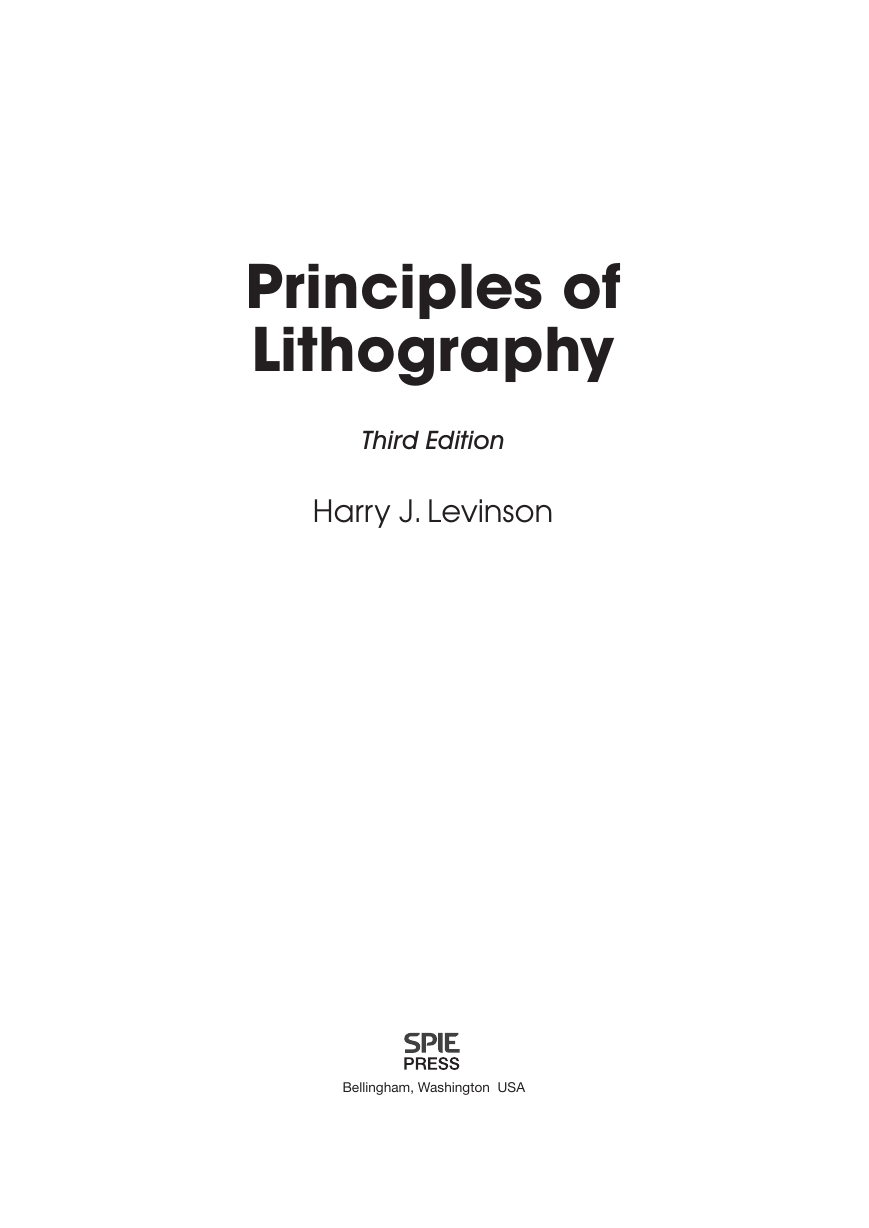
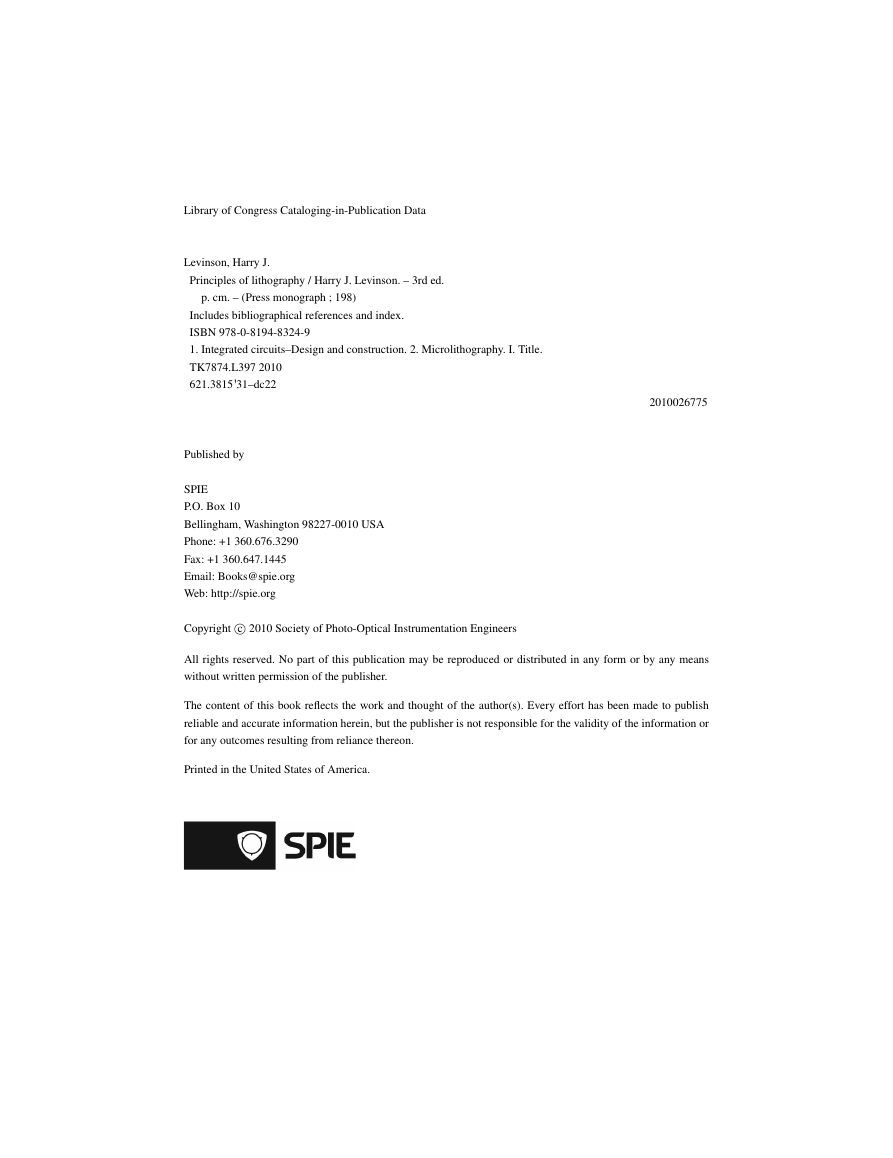
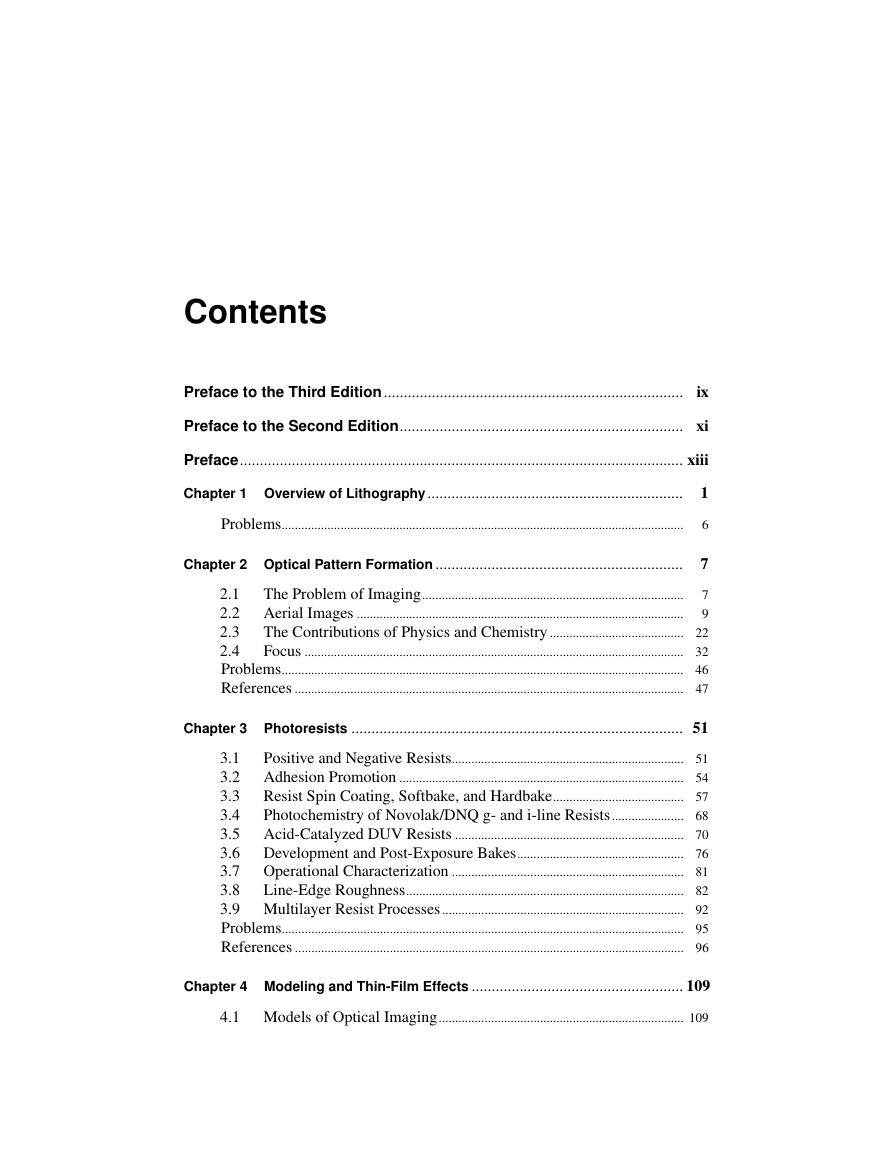
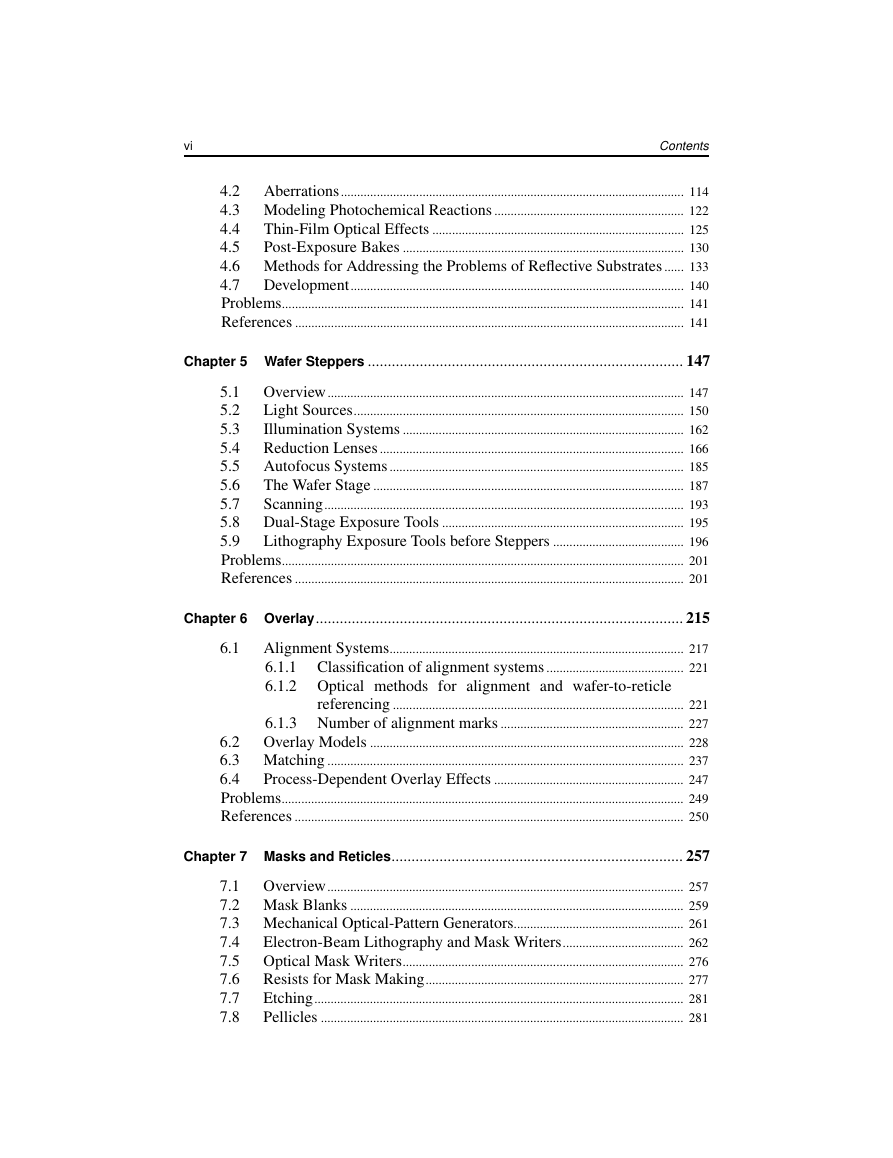
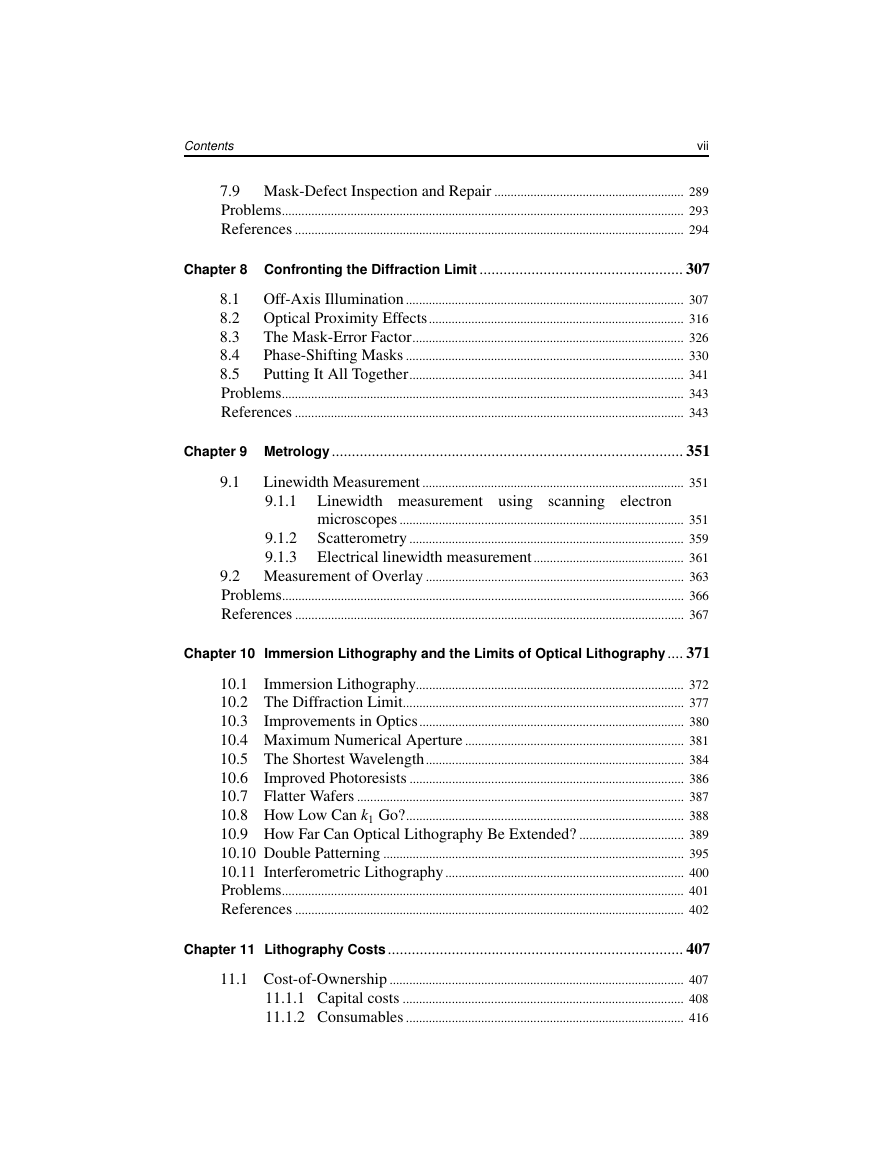








 2023年江西萍乡中考道德与法治真题及答案.doc
2023年江西萍乡中考道德与法治真题及答案.doc 2012年重庆南川中考生物真题及答案.doc
2012年重庆南川中考生物真题及答案.doc 2013年江西师范大学地理学综合及文艺理论基础考研真题.doc
2013年江西师范大学地理学综合及文艺理论基础考研真题.doc 2020年四川甘孜小升初语文真题及答案I卷.doc
2020年四川甘孜小升初语文真题及答案I卷.doc 2020年注册岩土工程师专业基础考试真题及答案.doc
2020年注册岩土工程师专业基础考试真题及答案.doc 2023-2024学年福建省厦门市九年级上学期数学月考试题及答案.doc
2023-2024学年福建省厦门市九年级上学期数学月考试题及答案.doc 2021-2022学年辽宁省沈阳市大东区九年级上学期语文期末试题及答案.doc
2021-2022学年辽宁省沈阳市大东区九年级上学期语文期末试题及答案.doc 2022-2023学年北京东城区初三第一学期物理期末试卷及答案.doc
2022-2023学年北京东城区初三第一学期物理期末试卷及答案.doc 2018上半年江西教师资格初中地理学科知识与教学能力真题及答案.doc
2018上半年江西教师资格初中地理学科知识与教学能力真题及答案.doc 2012年河北国家公务员申论考试真题及答案-省级.doc
2012年河北国家公务员申论考试真题及答案-省级.doc 2020-2021学年江苏省扬州市江都区邵樊片九年级上学期数学第一次质量检测试题及答案.doc
2020-2021学年江苏省扬州市江都区邵樊片九年级上学期数学第一次质量检测试题及答案.doc 2022下半年黑龙江教师资格证中学综合素质真题及答案.doc
2022下半年黑龙江教师资格证中学综合素质真题及答案.doc